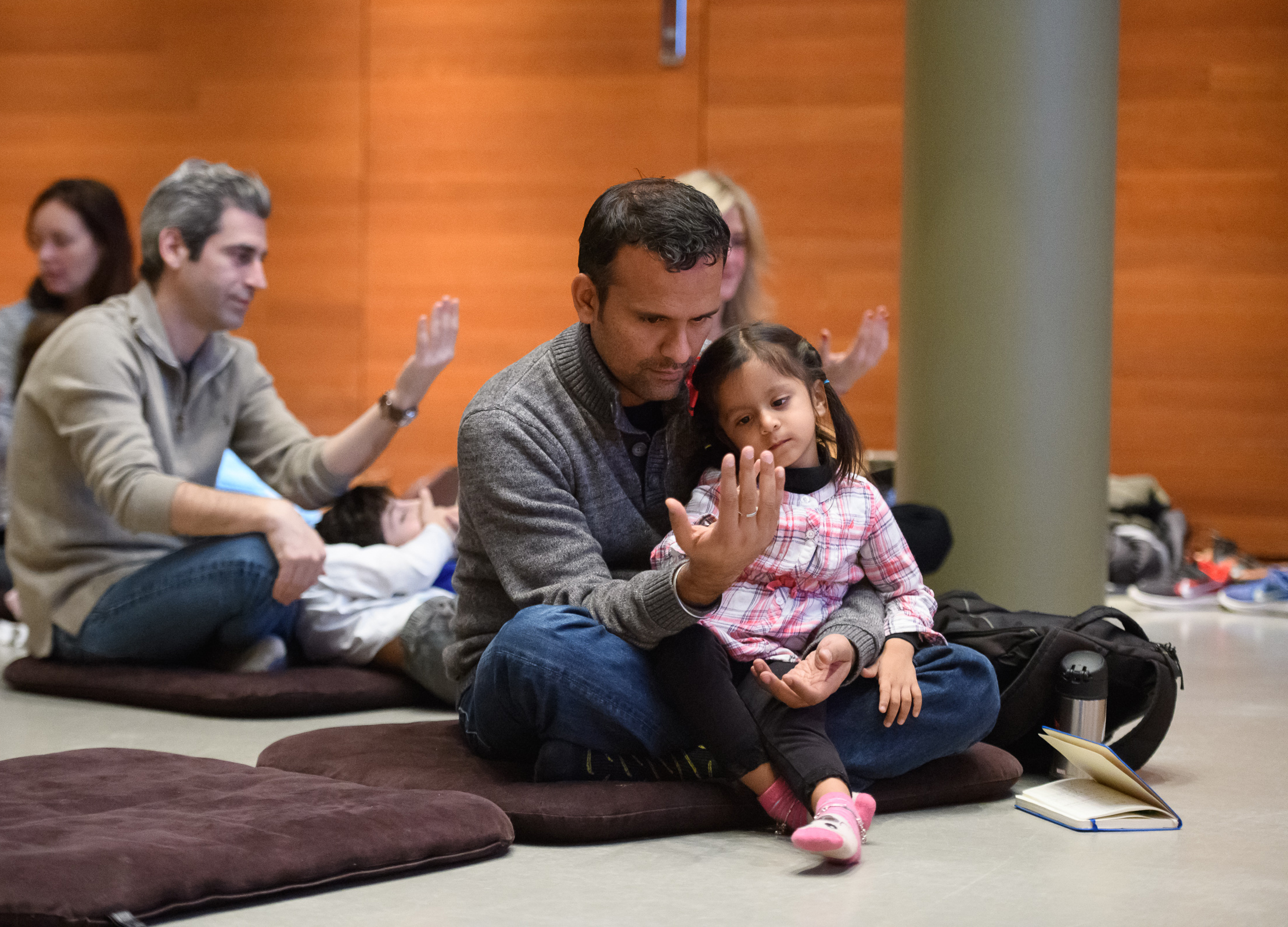
This blog post is written by mindfulness teacher and neuroscience researcher, Ayman Mukerji Househam, who is leading a family mindfulness workshop series at the Rubin, beginning in November.
Have you tuned in to your body lately? You can do this by noticing the tensing of your muscles, change in your posture, the temperature of your palms and soles, or simply how you move. If your answer is “never” or “sometimes,” please read on.
The body is a great tool. With practice, you could use it as a barometer for charged emotions as they arise. Even before you fully realize what you are feeling, your body does. Recognizing the relationship between your emotions and your body is the biggest step to ending stress before it takes hold of you.
This technique is especially handy if you are a parent. Children sense and mirror our unspoken emotions. For example, you may have noticed that when you are having a tough time at work or arguing with your partner, your child acts out more.
It is normal for emotions to arise—for you and your child. Identifying and managing these emotions is where the art of mindfulness lies.
Here are five tips on how to practice tuning in to the body to manage emotions:

1) Practice body-scan regularly—while you are calm. Train your brain to tune in to the physical sensations of every body part. Doing this while you are calm gives your brain an idea of where the baseline state of the body sensation is. So when a challenge arises, the brain notices that the body has deviated.
2) During your meditation practice start noticing emotions and tension. Once you recognize that there is a charged feeling, label it, then breathe into it and let it go. When you are faced with a stressful situation, you can learn to replicate this practice.

3) While you are with your child, check in on your body and notice if it is tense. If you find a part that is tense, relax that part and bring your mind back to the physical sensation of breathing.
4) Start tuning in to your child’s body language.. Notice any clenching and out-of-character behavior. These are early signs of negative emotions. Give them tools to calm themselves down as soon as you notice these signs.
5) Help your child identify their emotions. Assume the role of an empathetic peer rather than a teacher—you are both learning how to do this. Give them a range of options while you ask what they feel. A good starting list is: happy, excited, sad, scared, or angry. If you notice that your child has a negative emotion, guide them to use calming techniques.

The side effect of incorporating these mindful pauses and check-ins? Tantrums will become less frequent; soon, your child can start learning these techniques by observing you. You will be in a position to teach them how to self-soothe because you are practicing it yourself!
To practice these techniques and to learn practical strategies to reduce your and your child’s reactive patterns, join Ayman Mukerji Househam’s mindfulness for families workshop “Reconnecting to the Parent Body” on January 14. Don’t forget to bring your little gurus with you!
About the Author
Ayman Mukerji Househam is a mindfulness teacher and neuroscience researcher at NYU Langone Medical School. Her work focuses on the benefits of mindfulness for families. Househam’s publications show the benefits of a regular mindfulness practice on the brain and general well-being. She is finishing a publication on the neuroimmunological and gut microbial changes associated with a stress-free life. Househam has worked with pediatric patients with autism spectrum disorder and ADHD, a topic she elaborates on in another upcoming book. Her approach toward building mindful families blends mindfulness techniques of the East with parent-child-interaction therapy of the West.
A mindfulness practitioner for the past twenty years, Househam practices mindfulness with her own family of four.
Family Programs are supported in part by public funds from the New York City Department of Cultural Affairs in partnership with the City Council.

Photos: Filip Wolak

